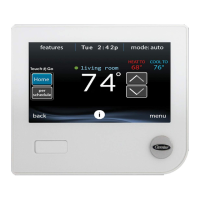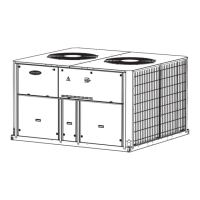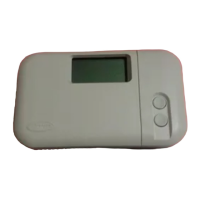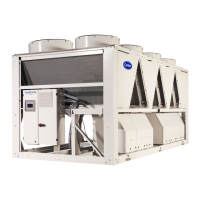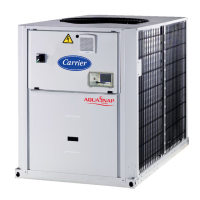Operator access
i-Vu CCN Pro 4.2 35
Privileges control the parts of a i-Vu CCN Pro system an operator can access. Privileges also control what an
operator can do and what he can change.
To set up operator access to your system:
1 Log into i-Vu CCN Pro as the Administrator. See Operators and operator groups (page 39).
2 Define privilege sets by job function. See Privilege sets (page 38).
3 Enter each operator in the system by assigning him privilege sets and entering settings that apply only to
him. If you need to assign the same privilege set to multiple operators, you can create an operator group
and assign the privilege set to the group. See Operators and operator groups (page 39).
An operator can change many of his operator settings on the My Settings page (page 41).
To access i-Vu CCN Pro, an operator must enter his user name and password. This password requirement can
be enhanced by using i-Vu CCN Pro’s configurable password policy
Restricting operator access
To restrict access to your system, you can:
• Restrict an operator's privileges
• Use location-dependent operator access
• Change a microblock's Editing Privilege from Preset to a specific privilege. The microblock's properties
will be editable only by an operator that has that privilege.
CAUTION Each microblock property has a default Editing Privilege (represented by the Preset option)
that is appropriate for that property. Changing
Preset to a specific privilege changes every property in the
microblock to the same privilege which may produce undesirable results.
Privileges
allows an operator to access (but not edit)...
Access System Tree the
page.
Access Equipment Items tables in the navigation
tree or Properties pages.
Access Scheduling Groups in the navigation
tree.
Access System Options Items under
.
Access Alarms alarms.
This Parameter privilege...
allows an operator to edit properties such as...
Edit Setpoint Parameters occupied and unoccupied heating and cooling setpoints.
Edit Tuning Parameters gains, limits, trip points, hysteresis, color bandwidths, design
temperatures, and optimal start/stop.
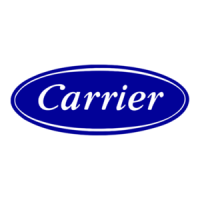
